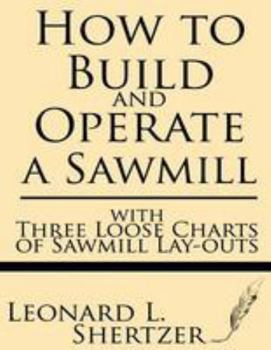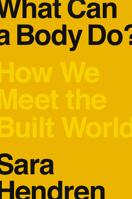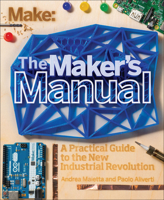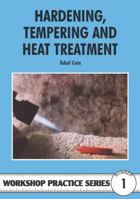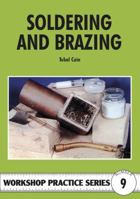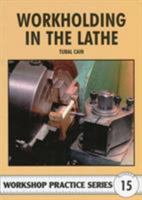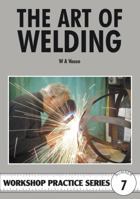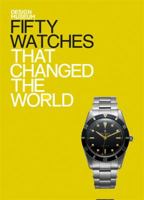How to Build and Operate a Sawmill
Select Format
Select Condition 
You Might Also Enjoy
Book Overview
How to Build and Operate a Sawmill: with Three Loose Charts of Sawmill Lay-outs
By Leonard L. Shertzer
Contents -Timber Supply
-Logging
-Building the Sawmill
-Sawing for Grade
-Yard and Piling
-Selling the Output
-Key to Plates
Foreword It is not my purpose to write a prolix and technical treatise nor to act as advertising agent for any particular brand of machinery. That I write at all is because of my observation that many men who build sawmills do not know how to build them, either for efficiency or for economy, and certainly many men who operate them are squandering both their own and their country's resources. I recently read in the American Lumberman a query as to whether there were any textbooks to be had on how to build and operate a sawmill. The answer was: "There is none." Prof. C. A. Schenck, formerly of the Biltmore Forest School, compiled a book on ''Lumbering and Lodging" to be used as a textbook in the school. It is a valuable work but it does not contain any practical suggestions that help the average sawmill man. It is too technical and anybody that knows the sawmill man knows he will not read a technical book. I do not assume fully to supply this need but simply to offer some practical suggestions, gleaned from experience and observation, that may help some others to avoid some of the mistakes I, myself, have made. I may also provoke some more competent authorities to take up the subject and to write something really worthwhile. Thus we would eventually build up some authoritative saw- milling literature. Nor do I assume to write for the man who owns his modern bandmill; makes more in a day than I do in a month, and knows the business better than I could ever hope to know it. He is too busy anyway to read what I have to say. He could probably write much better himself and say more in fewer words, but is too but is too busy for that. He will tell you he had to learn by hard knocks; let the other fellow do the same. Why should he give information gratis that cost him years to accumulate? I write rather with the man in view who operates the small sawmill, sawing anywhere from 10,000 to 30,000 feet a day, or the man who is contemplating taking a flyer in the sawmill business - the farmer who owns some timber and thinks he will turn it into lumber, having heard vague rumors of the high prices of lumber, and knowing what he has to pay for the few thousand feet he buys annually from the local lumber yard. There are also a large number of successful men who have made money in business or professions that are interested in timber as an investment. Later they decide, like the farmer, to manufacture their own stumpage. There are those also who have had northern... ------------------------------------------------------------------------------------------------------------------------------------------ Windham Press is committed to bringing the lost cultural heritage of ages past into the 21st century through high-quality reproductions of original, classic printed works at affordable prices. This book has been carefully crafted to utilize the original images of antique books rather than error-prone OCR text. This also preserves the work of the original typesetters of these classics, unknown craftsmen who laid out the text, often by hand, of each and every page you will read. Their subtle art involving judgment and interaction with the text is in many ways superior and more human than the mechanical methods utilized today, and gave each book a unique, hand-crafted feel in its text that connected the reader organically to the art of bindery and book-making. We think these benefits are worth the occasional imperfection resulting from the age of these books at the time of scanning, and their vintage feel provides a connection to the past that goes beyond the mere words of the text
By Leonard L. Shertzer
Contents -Timber Supply
-Logging
-Building the Sawmill
-Sawing for Grade
-Yard and Piling
-Selling the Output
-Key to Plates
Foreword It is not my purpose to write a prolix and technical treatise nor to act as advertising agent for any particular brand of machinery. That I write at all is because of my observation that many men who build sawmills do not know how to build them, either for efficiency or for economy, and certainly many men who operate them are squandering both their own and their country's resources. I recently read in the American Lumberman a query as to whether there were any textbooks to be had on how to build and operate a sawmill. The answer was: "There is none." Prof. C. A. Schenck, formerly of the Biltmore Forest School, compiled a book on ''Lumbering and Lodging" to be used as a textbook in the school. It is a valuable work but it does not contain any practical suggestions that help the average sawmill man. It is too technical and anybody that knows the sawmill man knows he will not read a technical book. I do not assume fully to supply this need but simply to offer some practical suggestions, gleaned from experience and observation, that may help some others to avoid some of the mistakes I, myself, have made. I may also provoke some more competent authorities to take up the subject and to write something really worthwhile. Thus we would eventually build up some authoritative saw- milling literature. Nor do I assume to write for the man who owns his modern bandmill; makes more in a day than I do in a month, and knows the business better than I could ever hope to know it. He is too busy anyway to read what I have to say. He could probably write much better himself and say more in fewer words, but is too but is too busy for that. He will tell you he had to learn by hard knocks; let the other fellow do the same. Why should he give information gratis that cost him years to accumulate? I write rather with the man in view who operates the small sawmill, sawing anywhere from 10,000 to 30,000 feet a day, or the man who is contemplating taking a flyer in the sawmill business - the farmer who owns some timber and thinks he will turn it into lumber, having heard vague rumors of the high prices of lumber, and knowing what he has to pay for the few thousand feet he buys annually from the local lumber yard. There are also a large number of successful men who have made money in business or professions that are interested in timber as an investment. Later they decide, like the farmer, to manufacture their own stumpage. There are those also who have had northern... ------------------------------------------------------------------------------------------------------------------------------------------ Windham Press is committed to bringing the lost cultural heritage of ages past into the 21st century through high-quality reproductions of original, classic printed works at affordable prices. This book has been carefully crafted to utilize the original images of antique books rather than error-prone OCR text. This also preserves the work of the original typesetters of these classics, unknown craftsmen who laid out the text, often by hand, of each and every page you will read. Their subtle art involving judgment and interaction with the text is in many ways superior and more human than the mechanical methods utilized today, and gave each book a unique, hand-crafted feel in its text that connected the reader organically to the art of bindery and book-making. We think these benefits are worth the occasional imperfection resulting from the age of these books at the time of scanning, and their vintage feel provides a connection to the past that goes beyond the mere words of the text
Format:Paperback
Language:English
ISBN:1628450150
ISBN13:9781628450156
Release Date:May 2013
Publisher:Windham Press
Length:32 Pages
Weight:0.20 lbs.
Dimensions:0.1" x 8.5" x 11.0"
Customer Reviews
0 customer rating | 0 review
There are currently no reviews. Be the first to review this work.











